Nizoral Shampoo for Hair Loss: Does it Work?

Hair loss is a common concern affecting millions of people worldwide, leading many to seek effective treatments to maintain a healthy head of hair.
Among the various options available, Nizoral shampoo has garnered attention for its ability to combat dandruff and its potential role in reducing hair loss.
This article will explore whether Nizoral shampoo truly works for hair loss, how it compares to other treatments, and what users can expect from incorporating it into their hair care routine.
- Does Nizoral shampoo for hair loss help?
- How to use
- Side effects
- Does Nizoral cause hair loss?
- Before and after photos
- Minoxidil vs Nizoral
- Reviews
- Other hair loss treatments
Does Nizoral shampoo for hair loss help?
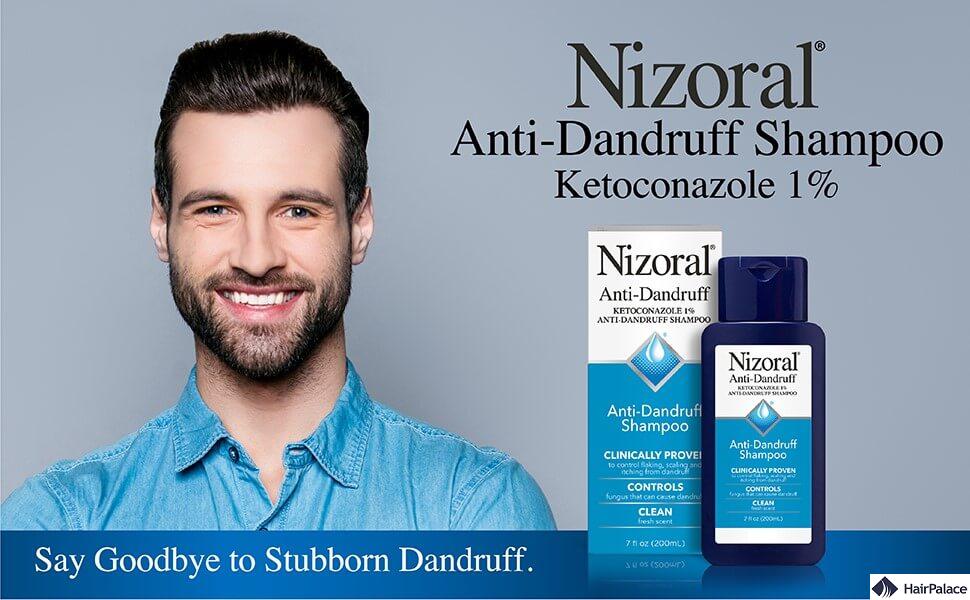
Nizoral shampoo, which contains the active ingredient ketoconazole, is primarily an antifungal medication used to treat skin infections and dandruff.
However, some studies and anecdotal evidence suggest that Nizoral might have a secondary benefit for hair loss, particularly in androgenetic alopecia (male pattern baldness).
Some studies suggest that ketoconazole stimulates hair growth and combats DHT, the hormone responsible for androgenetic alopecia.
Nizoral has anti-inflammatory properties that can help soothe hair follicles. This means that it’s also great for hair loss related to fungal infections or skin diseases.
A healthy scalp is crucial for hair growth so controlling dandruff and other scalp conditions creates a better growth environment for hair.
However, Nizoral is not a miracle cure for hair loss. While it might help when combined with other treatments, it’s unlikely to reverse significant hair loss on its own.
How to use Nizoral shampoo for hair loss
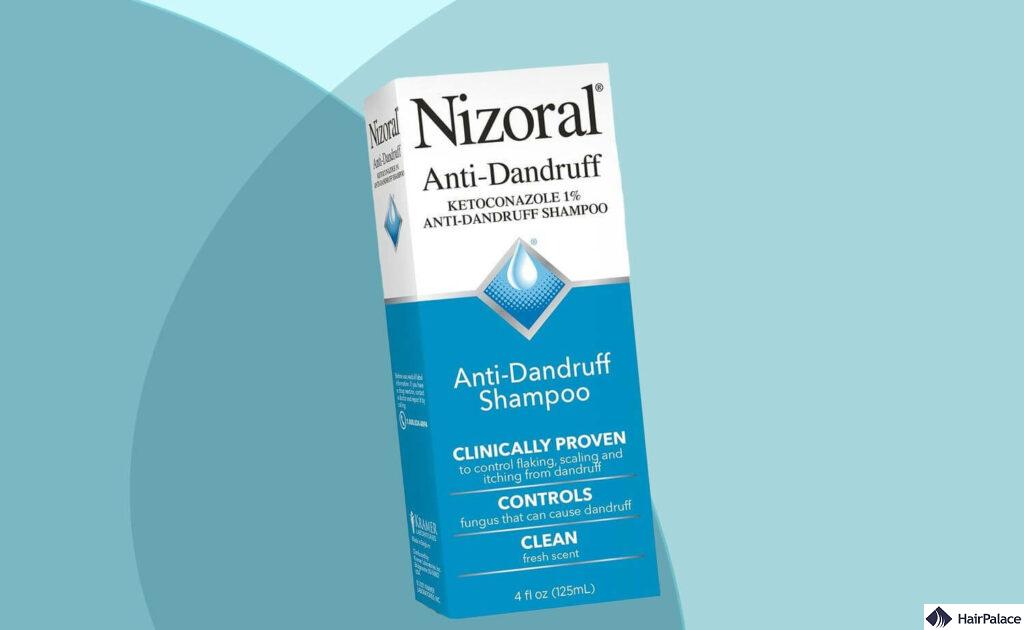
Ensure that you buy a ketoconazole shampoo that fits your hair loss condition.
Once you’ve checked the label and ensured you bought the right product, you should apply it to your scalp:
- Start by thoroughly wetting your hair and scalp with warm water.
- Pour a small amount of Nizoral shampoo (about the size of a quarter) into your hands.
- Gently massage the shampoo into your scalp, focusing on the areas where you experience hair thinning or hair loss. Ensure even distribution across the entire scalp.
- Leave the shampoo on your scalp for 3-5 minutes. This allows the active ingredient, ketoconazole, to penetrate the scalp and exert its effects.
- Thoroughly rinse your hair and scalp with warm water to remove any remaining shampoo.
The ketoconazole shampoo should be used over several months to treat hair loss and lead to significant hair growth.
How much Nizoral should you use for hair regrowth?
Research suggests that applying more Nizoral won’t necessarily lead to a bigger improvement in male pattern hair loss.
Use Nizoral shampoo 2-3 times per week. This frequency is sufficient to achieve the benefits without over-drying your scalp.
After a few months, once your scalp has adjusted, you might reduce the frequency to 1-2 times per week, depending on how your scalp responds.
Nizoral shampoo side effects
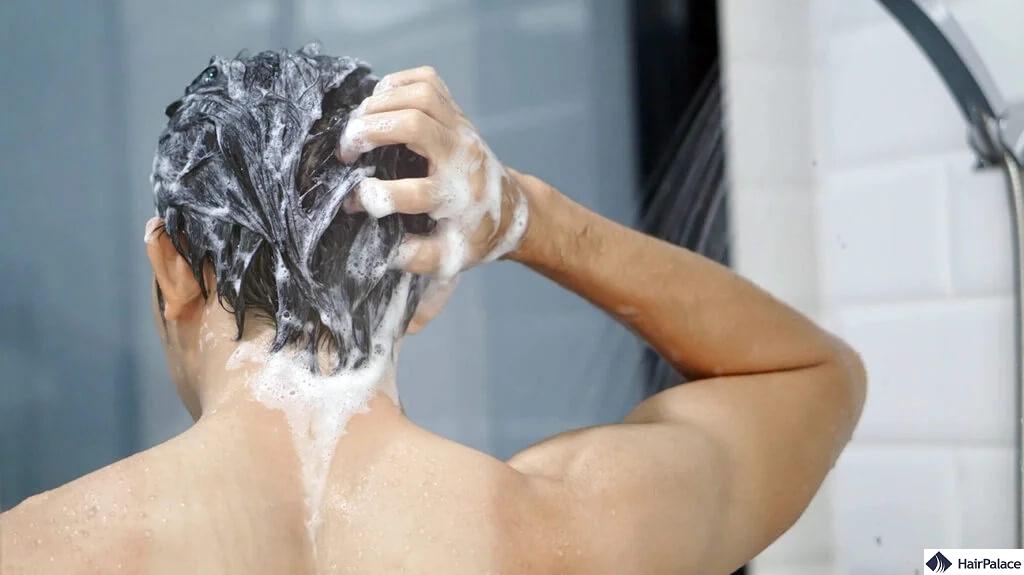
Nizoral shampoo, while generally safe for most people, can have some side effects, especially with prolonged or excessive use. Here are some potential side effects to be aware of:
- Scalp Irritation
- Dry or Oily Scalp
- Hair Texture Change
- Increased Hair Shedding
- Allergic Reactions
- Discoloration of Hair
- Contact Dermatitis
If you experience side effects, try using the shampoo less frequently. Use a moisturizing conditioner to counteract dryness of the hair and scalp.
In case the side effects persist or worsen, it’s best to consult with a dermatologist or healthcare provider.
Does Nizoral shampoo cause hair loss?
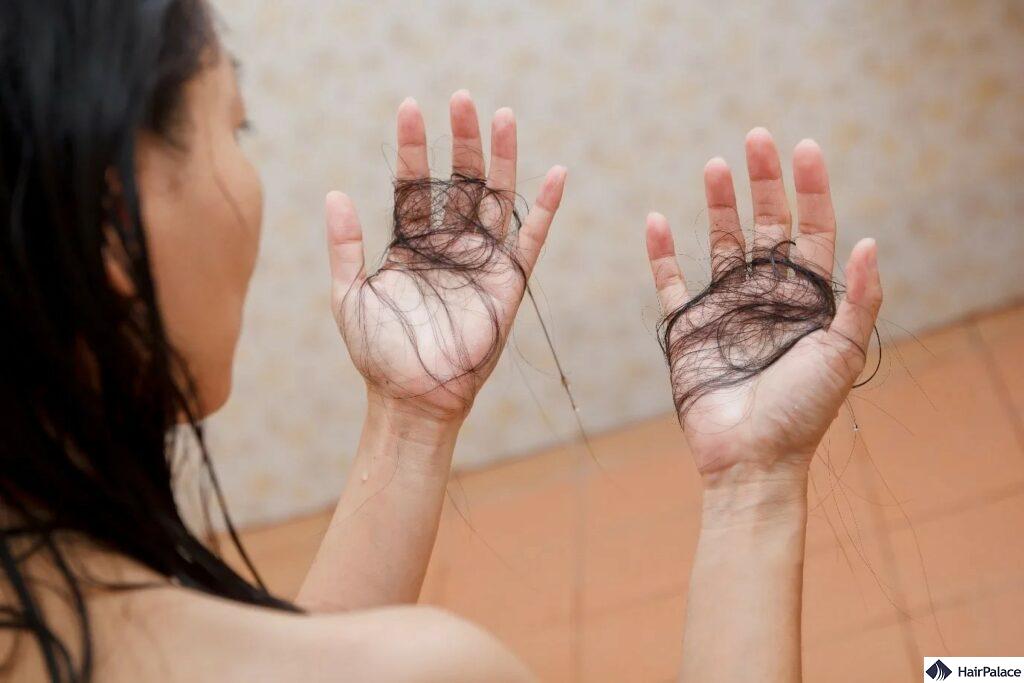
Some users report increased hair shedding when they first start using Nizoral.
This can be a temporary phase, often seen with many hair loss treatments, where weaker hairs fall out to make way for new, healthier growth.
This phenomenon is sometimes referred to as “shedding” and usually subsides after a few weeks.
If Nizoral causes significant scalp irritation or dryness, it could lead to an unhealthy scalp environment, potentially contributing to hair breakage or loss.
If you notice significant hair loss or scalp discomfort while using Nizoral, reduce usage or consult a dermatologist.
Nizoral shampoo hair loss before after
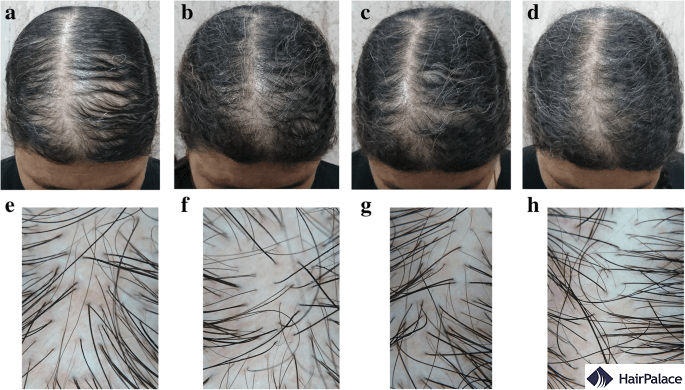
Minoxidil vs Nizoral shampoo for hair growth
Topical minoxidil is a widely used topical treatment specifically designed to stimulate hair growth and slow hair loss, particularly in cases of male and female pattern hair loss.
Nizoral shampoo, on the other hand, is primarily an antifungal treatment for dandruff but has secondary benefits for hair loss by reducing scalp inflammation and possibly lowering DHT levels.
Minoxidil directly promotes hair regrowth, while Nizoral supports a healthier scalp environment, making them complementary but not interchangeable treatments for hair loss.
Nizoral shampoo hair loss reviews
Nizoral shampoo is widely used to treat hair loss and more specifically, male pattern baldness. Reviews are mostly positive and many users praise the hair loss treatment.
The top review on Amazon says: “I have to tell you after JUST THE FIRST TIME, my scalp stopped itching and I don’t have flakes falling off of me. For me, this product has worked magnificently! I wouldn’t take the time to write a review this long if I was so ecstatic and surprised how well it worked.”
Multiple reviews highlight Nizoral shampoos’ ability to stimulate hair growth and treat fungal infections.
Most customers highlight that while other OTC dandruff shampoos have failed, Nizoral shampoo was able to help.
What can you do if Nizoral doesn’t work?

You have a wide variety of treatments to choose from if Nizoral shampoo fails to result in adequate hair growth.
Most of these treatments are clinically proven to help with treating hair loss.
- Minoxidil topical hair loss treatment
- Finasteride
- Mens hair transplant
- PRF hair treatment
- Microneedling for hair loss
- PRP for hair loss
Last medically reviewed on October 3rd, 2025
- Aldhalimi, Muhsin A., Najah R. Hadi, and Fadaa A. Ghafil. "Promotive effect of topical ketoconazole, minoxidil, and minoxidil with tretinoin on hair growth in male mice." International Scholarly Research Notices 2014.1 (2014): 575423.https://onlinelibrary.wiley.com/doi/abs/10.1155/2014/575423
- Choi, F. D., Juhasz, M. L., & Atanaskova, M. N. (2019). Topical ketoconazole: A systematic review of current dermatological applications and future developments. The Journal of Dermatological Treatment, 30(8), 760–771https://doi.org/10.1080/09546634.2019.1573309
- Piérard-Franchimont C, De Doncker P, Cauwenbergh G, Piérard GE. Ketoconazole shampoo: effect of long-term use in androgenic alopecia. Dermatology. 1998;196(4):474-7. doi: 10.1159/000017954. PMID: 9669136.https://pubmed.ncbi.nlm.nih.gov/9669136/
- Downs M. Nizoral shampoo for hair loss. DERMAdoctor,http://www.dermadoctor.com/article_Nizoral-Shampoo-for-Hair-Loss_198.html
- Rafi AW, Katz RM. Pilot Study of 15 Patients Receiving a New Treatment Regimen for Androgenic Alopecia: The Effects of Atopy on AGA. ISRN Dermatol. 2011;2011:241953. doi: 10.5402/2011/241953. Epub 2011 Apr 11. PMID: 22363845; PMCID: PMC3262531.https://www.ncbi.nlm.nih.gov/pmc/articles/PMC3262531/
- NIZORAL® (KETOCONAZOLE) 2% SHAMPOO DESCRIPTION https://www.accessdata.fda.gov/drugsatfda_docs/label/2013/019927s032lbl.pdf


